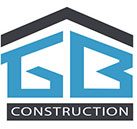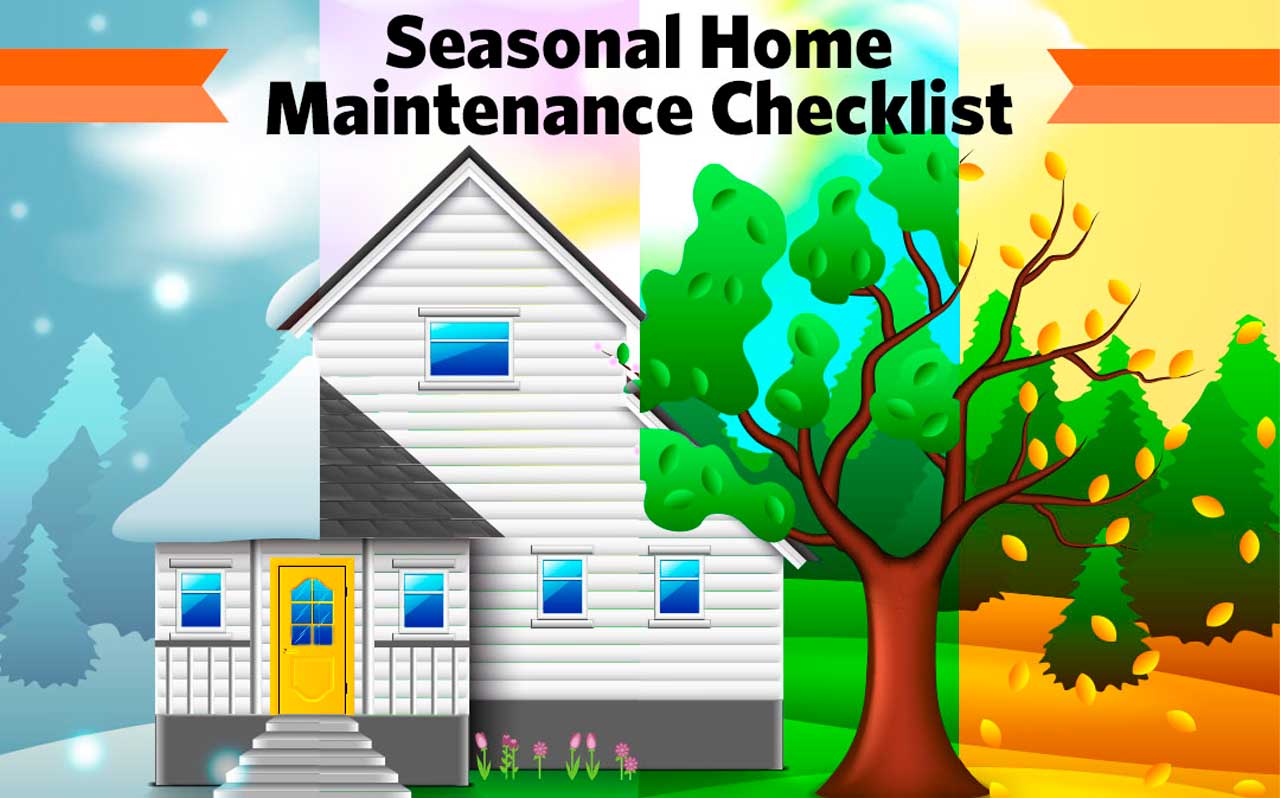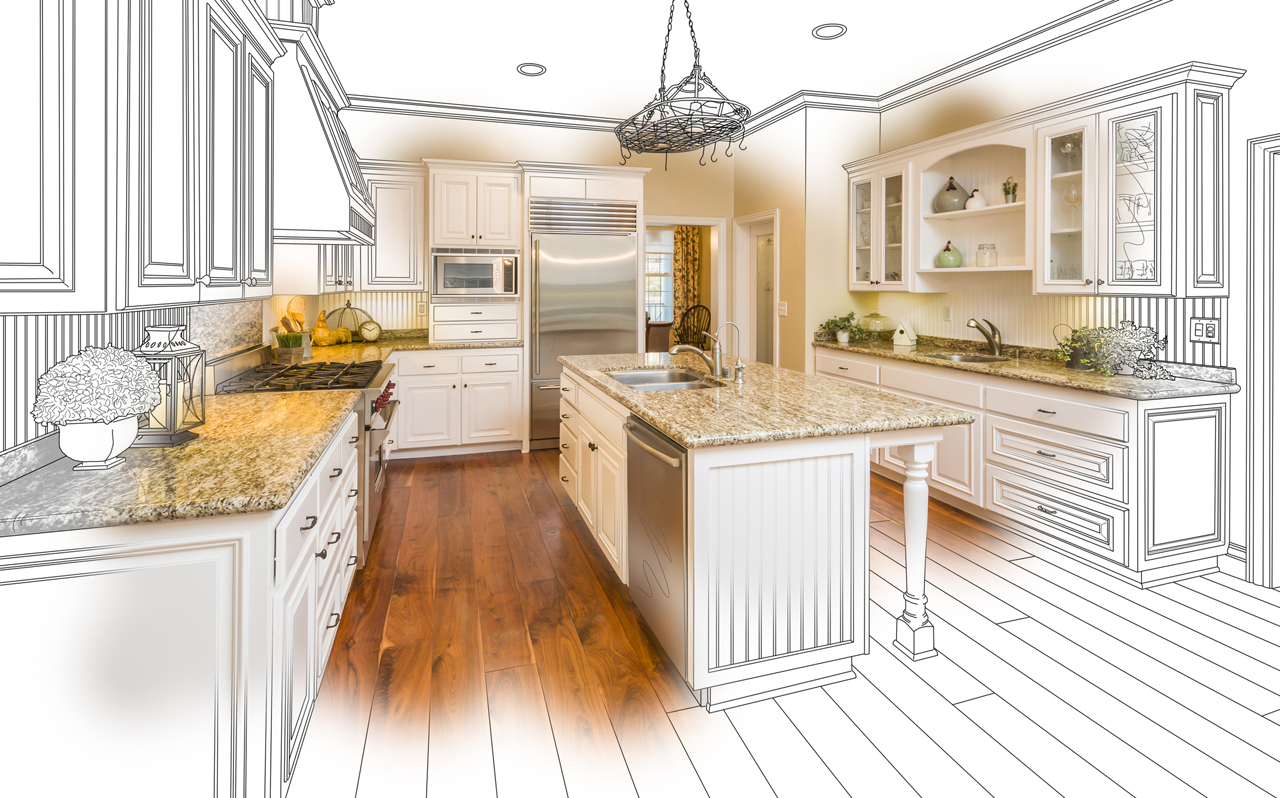Periodic Maintenance Checklist
Like a regular health check-up, a home maintenance schedule is important for every house’s upkeep. Continuing to check on your exterior, appliances, heating and cooling, plumbing, security, and electrical systems will help prevent breakdowns, save money, and keep your home looking its best. Use this home maintenance checklist to help schedule your seasonal updates, repairs, and cleaning, along with a handful of monthly tasks. Revisit the list monthly and at the beginning of each season to keep your home in prime working condition. If any of the jobs go beyond your skill level or lead to more involved repairs, consider hiring a professional to help.
Monthly Home Improvement Checklist
Inspecting your home and completing monthly home improvement projects will keep your maintenance schedule on track and easier to manage. Follow this comprehensive home maintenance checklist each month to help save time and money:
- Clean the furnace filter to remove dust build-ups, make it easier to regulate your home’s temperature, and ultimately decrease energy bills.
- Check the water softener and replenish salt if necessary.
- Clean faucet aerators and showerheads to remove mineral deposits.
- Inspect tub and sink drains for debris; unclog if necessary.
- Test smoke alarms, carbon monoxide detectors, fire extinguishers, and all ground-fault circuit interrupters.
- Inspect electrical cords for wear.
- Vacuum heat registers and heat vents.
- Check that indoor and outdoor air vents are not blocked.
- Flush out hot water from the water heater to remove accumulated sediment.
- Clean the garbage disposal by grinding ice cubes, then flushing with hot water and baking soda.
Seasonal Home Improvement: Fall Maintenance Checklist
In many regions, fall is the perfect season to tackle general home maintenance projects because the weather is generally dry and temperatures are moderate. Before you start your seasonal home maintenance checklist, examine both the interior and exterior of your home. Most of these tasks can be accomplished without the help of a professional, but it’s always better to be safe and call for assistance if a home improvement project is beyond your abilities. Here are our seasonal home improvement recommendations for fall:
- Rake leaves and aerate the lawn.
- Have forced-air heating system inspected by a professional. Schedule an inspection in late summer or early fall before the heating season begins.
- Check fireplace for damage or hazards, and clean fireplace flues.
- Seal cracks and gaps in windows and doors with caulk or weather stripping; replace if necessary.
- Swap old, drafty windows for more energy-efficient models.
- Touch up exterior siding and trim with paint.
- Inspect roofing for missing, loose, or damaged shingles and leaks.
- Power-wash windows and siding.
- Remove leaves and debris from gutters and downspouts.
- Mend cracks and gaps in the driveway and walkway.
- Drain and winterize exterior plumbing.
- Have your fireplace professionally inspected.
- Tune up major home appliances before the holidays.
- Repair or replace siding.
- Replace the batteries in smoke and carbon monoxide detectors. Install a smoke detector on every floor of your home, including the basement.
- Clean the carpets.
- Clean window and door screens.
- Vacuum lint from the dryer vent.
- Inspect exterior door hardware; fix squeaky handles and loose locks.
- Check for frayed cords and wires.
- Drain and store hoses, and drain in-ground sprinkler systems.
- Wrap insulation around outdoor faucets and pipes in unheated garages.
- Check water heater for leaks.
Seasonal Home Improvement: Winter Maintenance Checklist
Winter weather can be harsh on your home. The below-freezing temperatures can cause a number of problems, including frozen pipes and roof damage. To prevent winter harm and avoid calling a professional in the middle of a blizzard, be sure to check these winter items off your home maintenance checklist:
- Cover your air-conditioning unit.
- Check basement for leaks during thaws.
- Inspect the roof, gutters, and downspouts for damage after storms.
- Vacuum bathroom exhaust fan grill.
- Vacuum refrigerator and freezer coils and empty and clean drip trays.
- Clean drains in sinks, tubs, showers, and dishwashers.
Seasonal Home Improvement: Spring Maintenance Checklist
Once the ground has thawed and the trees begin to bud, it’s time to prepare your home for spring. On top of your regular spring cleaning, you’ll also want to consider these general upkeep tips. Use our spring home maintenance checklist to make sure everything in your home from the basement to the roof is in tip-top shape:
- Inspect roofing for missing, loose, or damaged shingles and leaks.
- Change the air-conditioner filter.
- Clean window and door screens.
- Polish wood furniture, and dust light fixtures.
- Refinish the deck.
- Power-wash windows and siding.
- Remove leaves and debris from gutters and downspouts.
- Replace the batteries in smoke and carbon monoxide detectors.
- Have a professional inspect and pump the septic tank.
- Inspect sink, shower, and bath caulking for deterioration.
- Vacuum lint from dryer vent.
- Inspect chimney for damage.
- Repair or replace caulking and weather stripping around windows, doors, and mechanicals.
- Remove insulation from outdoor faucets and check sprinkler heads.
- Have air-conditioning system serviced.
- Drain or flush water heater.
- Fertilize your lawn.
Seasonal Home Improvement: Summer Maintenance Checklist
When the sun is out and warm weather is finally here to stay, the last thing you should worry about is home maintenance. Use our quick summer home maintenance guide to get the hard work out of the way at the beginning of the season. Don’t worry if the weather is already heating up; most of these tasks are indoors:
- Oil garage-door opener and chain, garage door, and all door hinges.
- Remove lint from inside and outside washer hoses and dryer vents.
- Clean kitchen exhaust fan filter.
- Clean refrigerator and freezer coils and empty and clean drip trays.
- Check dishwasher for leaks.
- Check around kitchen and bathroom cabinets and around toilets for leaks.
- Replace interior and exterior faucet and showerhead washers if needed.
- Seal tile grout.
- Prune trees and shrubs.


